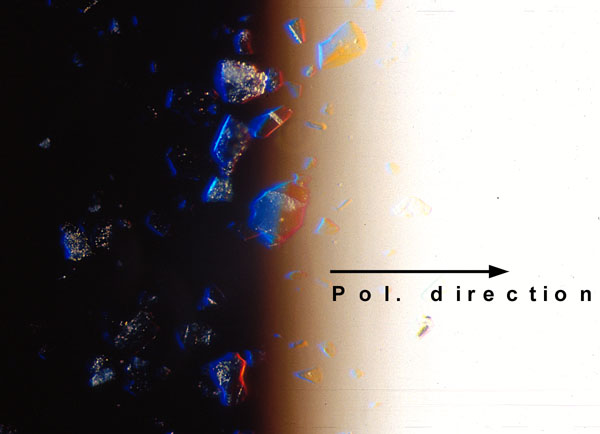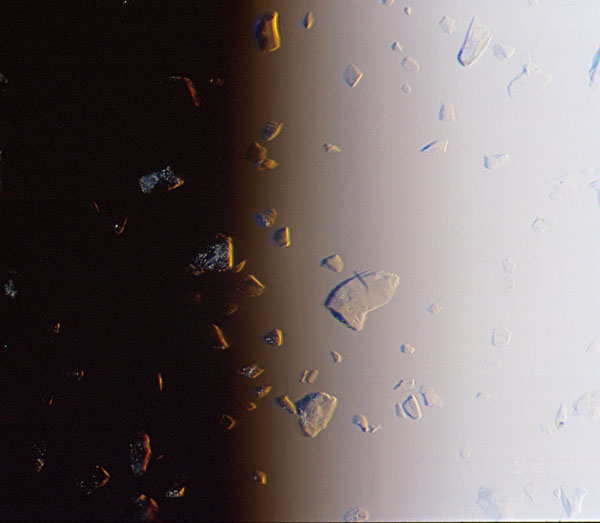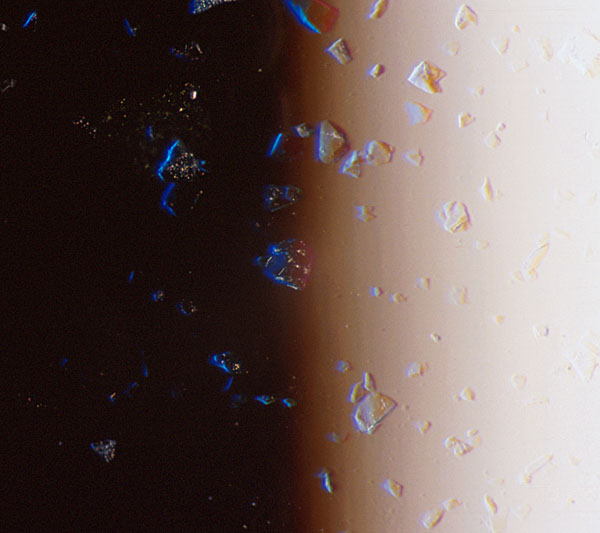Oblique illumination method
 |
 |
|
Figure1. n=1.5446 |
Figure 2. n=1.5446 |
 |
 |
|
Figure 3. n=1.528 |
Figure 4. n=1.539 |
|
|
Figure 5. n=1.5528 |
Quartz crystals in a range of liquids from n= 1.528 to 1.553.
-
Figure 1: liquid index matches ordinary index of quartz. Central crystal has ordinary index parallel to polarizer and appears thus with a red-orange right side and a blue left side. Only the crystals near the border of the dark side can be viewed with this technique.
-
Figure 2: same index of liquid but rotation of the stage by 90°. The central crystal has now extraordinary index (higher) parallel to polarizer: the right side becomes bright orange.
-
Figure 3: the lowest liquid refractive index: all crystals have dark blue and pale yellow sides.
-
Figure 4: liquid index slightly lower than ordinary quartz index: all crystals on the dark border have an orange to yellow right side.
-
Figure 5: the highest liquid refractive index (equal to the high index of quartz): the central crystal oriented nearly parallel to the optic axis has a dark red side (nearly matching for the D line of sodium), other crystals in random orientation appear with a dark right side (brown to black) due to their low index of refraction and a blue left side.
Note that the colored effects are better seen with phase contrast on the whole field of view but the cost of oblique illumination is of course much lower. Phase contrast cannot be used if the indices of crystal and liquid are too far from each other because the phase difference can easily reach more than 360° and thus give a wrong interpretation. In that case, for the first examination of a crystal, I always use oblique illumination.
